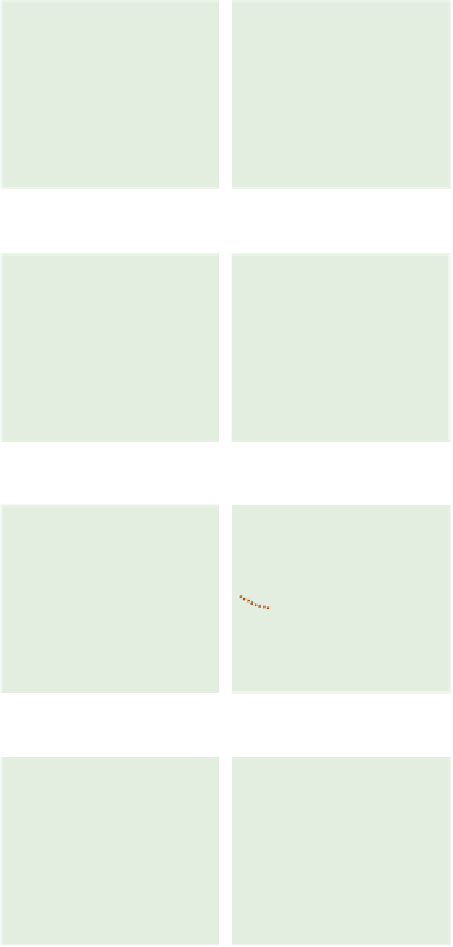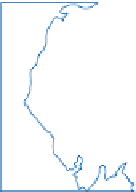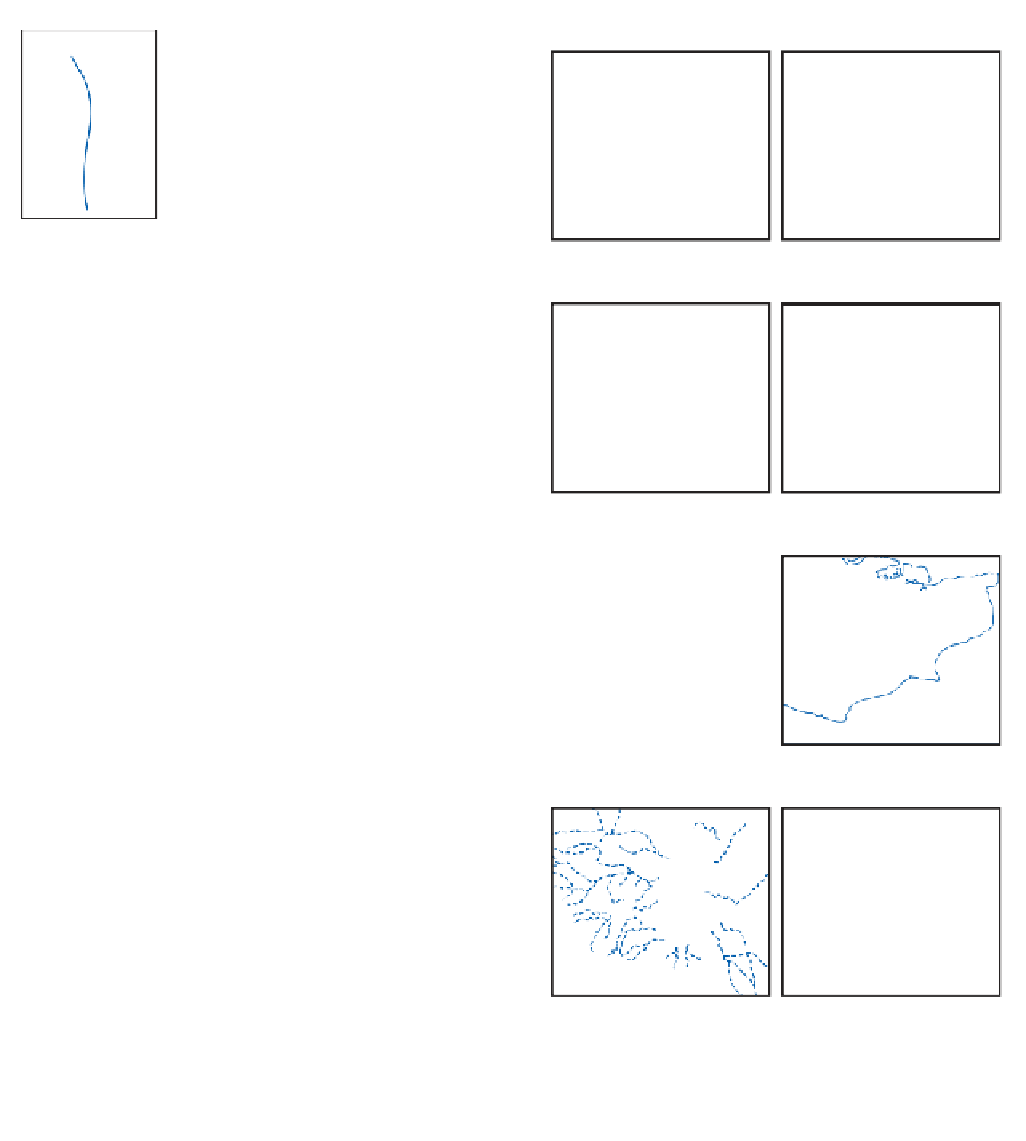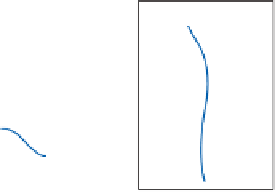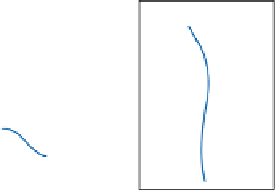Geoscience Reference
In-Depth Information
(a)
TRELLISED: River Adur,
West Sussex, England
DENDRITIC: Water of Tarf,
Kincardine, Scotland
1
1
2
1
1
2
1
1
2
1
1
2
1
1
2
1
1
1
1
2
2
2
2
4
2
2
4
2
2
4
1
1
2
2
3
3
6
10
5
1
1
2
1
1
2
2
2
4
3
4
4
9
10
6
16
18
South
Downs
0
1
km
2
0
3
STRAHLER
SHRÈVE
SCHEIDEGGER
km
RECTANGULAR:
Adirondack Mountains, USA
RADIAL:
English Lake District
(b)
0123456
0123
456
0
5
km
10
0
10
km
20
Stream order
Stream order
PARALLEL: Glen Fyne,
Argyll, Scotland
ANNULAR: Wealden District,
south east England
relationships between stream order and logarithmic values for
other network parameters, using Strahler's scheme.
Source: After Selby (1993)
The Weald
Binnein an Fhidhleir
0
1
km
2
0
10
km
20
permeability, and is central in the creation of
drainage
pattern
, which strongly reflects the underlying geological
structure (
Figure 14.18
).
In two respects, network evolution is also time-
dependent. The number and density of lower-order
streams are likely to increase on immature slopes before
river connectivity improves. This may be indicated by the
bifurcation ratio
CENTRIPETAL: Lake Eyre
basin, South Australia
DERANGED: Berriedale
Water, Caithness, Scotland
i
a
Lake
Eyre
B
r
= S
n
/S(
n
+ 1)
0
1
km
2
0
50
km
100
of tributaries S of order
n
to the number of streams of the
next higher order
n
+ 1. It falls as the network becomes
better integrated through channel capture and progressive
denudation of the land surface. The latter also represents
an adjustment of drainage to the underlying geological
structure after uplift. Network efficiency is related to the
stage of development. By the same token that channel
flow is more efficient than overland flow, fully inte-
grated networks drain catchments more efficiently than
immature networks. Catchment shape, defined by plan
circularity or elongation and size, affects both the channel
network and the hydrographic character of discharge
(
Figure 14.19
).
TRANSFER
Fluvial sediment transfer is the prime agent of the third
component of continental denudation, after weathering
and mass wasting. Sediment is sourced directly by channel
erosion, augmented by fine-grained debris from overland
flow and dissolved sediment in throughflow and ground

